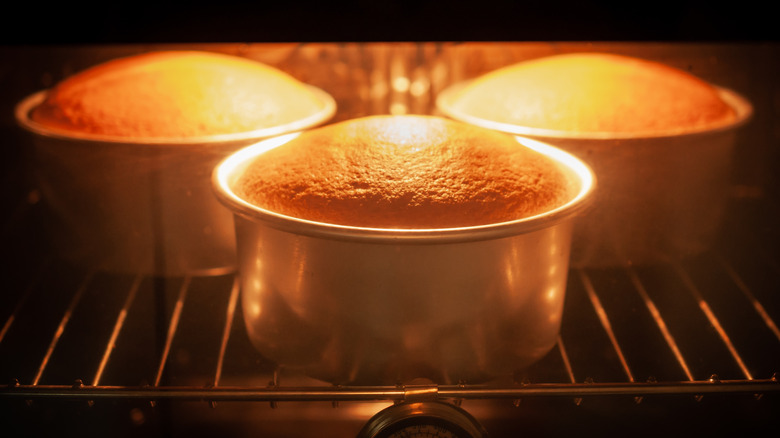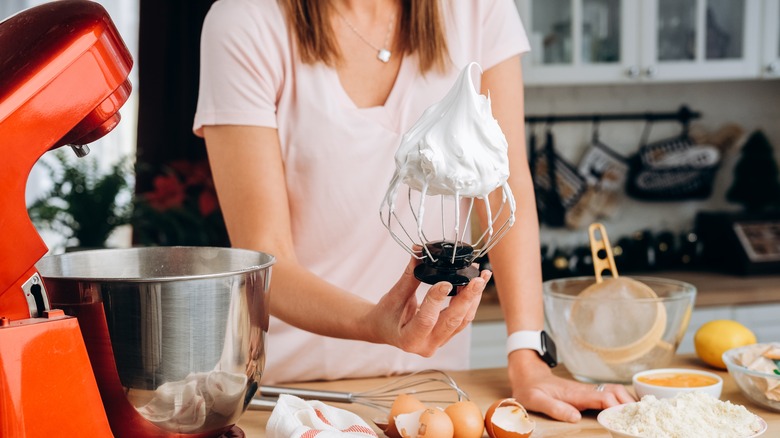The Substitution Tip When Using Egg Whites In Place Of Baking Soda
If you've ever been midway through a cake recipe and run out of baking soda, we've got the perfect substitution tip: turn the eggs in your recipe into a leavening agent by separating the whites from the yolks and whipping them up into stiff peaks. But why?
Commonly used in Irish soda bread and ginger cake, baking soda is an alkali that causes baked goods to rise when activated by an acidic ingredient, such as buttermilk, lemon juice, or cream of tartar, by creating bubbles of carbon dioxide. Luckily, this leavening effect can be recreated, albeit in a slightly different way, by egg whites that have been whipped up into a light and foamy texture.
Whipped egg whites do three things to baked goods. Firstly, incorporating air into the egg whites increases their volume, which therefore boosts the volume of your batter or dough and lends it some structure. Secondly, the air pockets that have been whipped into the whites are filled with steam when your mixture meets the heat of the oven — helping them expand even further as they bake. Finally, the proteins in the egg help baked goods hold that expanded shape once cooled, resulting in a muffin or brioche loaf that retains its lofty rise and tender texture. If the dish you're making doesn't ordinarily include eggs, you can simply replace some of the liquid in the recipe for the same quantity of egg whites to mimic the leavening characteristic of the omitted baking soda.
How to use egg whites as a leavening agent
The first step to using eggs as a leavening agent as a substitute for baking soda is to separate the yolks from the whites. You should use the same number of eggs that your original recipe calls for, so don't worry about increasing the amount. It's also useful to use room temperature eggs because they can hold more air as they're whipped up, resulting in a fluffier bake.
Add the egg yolks into your batter and beat them through as normal. Meanwhile, whip up the whites in a clean bowl that's free from grease to maximize their ability to foam up and increase in volume, until they reach the stiff peak stage. Finally, fold your whipped egg whites into your mixture just before placing your cake in the oven, taking care to use a gentle cutting motion with your spoon to prevent losing all that precious air you've incorporated into them. If your batter is particularly stiff, it can also help to mix a small amount of the whipped egg whites into it to loosen its consistency before folding in the remaining portion. The existing acid in your recipe will help to stabilize the whites, so they retain their voluminous structure as they rise.

